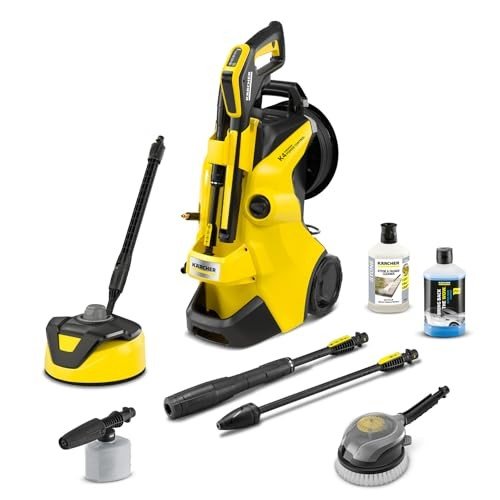The Essential Guide to Power Tools: Unlocking Potential for DIY Projects
Power tools have reinvented the way both professionals and DIY enthusiasts approach jobs ranging from woodworking to metalworking and beyond. With a large range of options available on the market, it's important to comprehend the different kinds of power tools, their applications, and how to use them safely and efficiently. This comprehensive guide will supply important insights into the world of power tools, assisting you pick the ideal ones for your jobs while ensuring safety and efficiency.
Types of Power Tools
Power tools can be broadly classified into 2 categories: corded and cordless. Each classification has its advantages and disadvantages, making them appropriate for various applications. Below is a comprehensive list of typical power tools you might think about.
Corded Power Tools
Corded tools are powered through an electrical outlet, providing consistent power without the requirement for battery management. Below are some common corded power tools:
Drills
- Application: Drilling holes and driving screws.
- Features: Typically have greater torque and continuous power.
Saws
- Types: Circular saw, jigsaw, band saw.
- Application: Cutting wood, metal, and other materials.
- Features: Greater cutting power and precision.
Mills
- Application: Grinding, honing, and polishing.
- Features: High RPM (revolutions per minute) for effective work.
Planers
- Application: Smoothing wood surface areas.
- Functions: Adjustable depth for various densities.
Cordless Power Tools
Cordless tools run on rechargeable batteries, offering convenience and portability. Here are several key cordless tools:
Cordless Drills
- Application: Drilling and screwing without the trouble of cables.
- Features: Lightweight and simple to maneuver.
Reciprocating Saws
- Application: Demolition and cutting in tight spaces.
- Functions: Versatile blade alternatives for numerous products.
Impact Drivers
- Application: Fastening screws and nuts, providing high torque.
- Functions: Compact and developed for heavy-duty usage.
Cordless Nailers
- Application: Driving nails quickly without manual effort.
- Features: Ideal for framing, roof, and completing jobs.
Security Tips for Using Power Tools
Using power tools includes inherent threats. It is important to follow security practices to minimize the opportunity of mishaps. Here are some vital security tips:
Wear Personal Protective Equipment (PPE):
- Safety glasses to secure eyes.
- Hearing protection when essential.
- Gloves ideal for the job at hand.
- Check out the Manual:
Familiarize yourself with the tool's functions, capabilities, and restrictions. - Check Tools Regularly:
Check for any indications of wear or damage before usage. - Work in a Clean Area:
Keep the office arranged to avoid journey threats. - Use the Right Tool for the Job:
Ensure the tool is designed for your particular task to avoid misuse. - Disconnect When Changing Accessories:
Always detach tools from power sources when altering bits or blades to avoid unexpected activation.
Best Practices for Maintaining Your Power Tools
Proper maintenance extends the life of power tools, guaranteeing they carry out efficiently when needed. Below are some best practices:
- Clean After Each Use:
Remove dust, particles, and any other contaminants. - Store Properly:
Keep tools in a dry, protected place, preferably with protective sheathing. - Inspect and Replace Batteries:
Regularly check rechargeable batteries and change them as required. - Hone Blades:
Keep cutting edges sharp for better efficiency and safety. - Set Up Professional Servicing:
Occasionally get your tools serviced by an expert, particularly if they are utilized frequently.
Frequently Asked Questions (FAQs)
1. What are the main differences in between corded and cordless power tools?
Corded tools use constant power and are normally more potent, making them ideal for sturdy tasks. Cordless tools, alternatively, provide higher mobility and benefit.
2. How do I choose the best power tool for my task?
Think about the kind of work, needed power, and whether portability is necessary. Reading evaluations and getting suggestions can likewise assist ensure you pick the appropriate tool.
3. How typically should I perform maintenance on my power tools?
It depends upon use frequency. For frequently utilized tools, a thorough cleansing and inspection after every usage is advisable. Less often utilized tools can be inspected and preserved quarterly.
4. Exist battery types I should prefer for cordless tools?
Lithium-ion batteries are typically chosen for their lighter weight and longer life compared to nickel-cadmium batteries.
5. Is it safe to use power tools in wet conditions?
No, running power tools in damp conditions positions significant dangers of electric shock. Constantly ensure your work area is dry.
Power tools have become vital in various applications, from enthusiast woodworking to professional construction. Understanding the kinds of tools offered, adhering to safety protocols, and maintaining them correctly makes sure that these tools can be used to their full capacity. As Power Tools Online , power tools continue to develop, making it vital for users to remain notified about the latest developments and best practices. When utilized properly, power tools can change any job into a masterpiece.
Table: Overview of Common Power Tools
| Tool Type | Application | Source of power | Secret Features |
|---|---|---|---|
| Corded Drill | Drilling/Screwing | Corded | Constant power, high torque |
| Circular Saw | Cutting | Corded | Accuracy cutting, various sizes |
| Cordless Drill | Drilling/Screwing | Cordless | Lightweight, portable |
| Reciprocating Saw | Demolition/Cutting | Cordless | Versatile for numerous materials |
| Effect Driver | Attaching | Cordless | High torque, compact design |
| Grinder | Grinding/Sharpening | Corded | High RPM for effective work |
| Cordless Nailer | Driving Nails | Cordless | Quick attaching, no handbook effort |
By empowering people with the understanding of picking and properly using power tools, this guide wants to boost efficiency, safety, and overall fulfillment in DIY and expert projects alike.

